Summer Gardening Stories
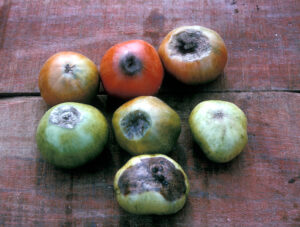
Blossom-End Rot Frustrates Tomato Growers
Eager tomato growers, having lovingly nurtured their plants, anxiously await their ripe gems. But alas, a black, leathery spot appears at the base of the fruit. Blossom end-rot is thankfully not an infectious disease, but rather a frustrating disorder of the fruit. The black scar tissue is thought to be caused by a deficiency of calcium in the developing fruit. In most cases, blossom end-rot is brought on by extreme fluctuations in soil moisture. And […]
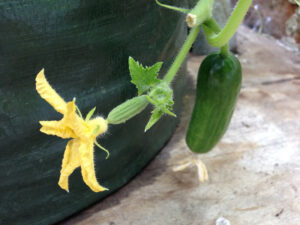
Cucumbers Bitter During Hot, Dry Weather
If you’ve noticed that your cucumbers are a little (or a lot) bitter lately, don’t give up hope. A little water, mulch and patience will provide relief. Most cucumber plants contain a bitter compound called cucurbitacin, which can be present in the fruit as well as the foliage. Bitterness in cucumbers tends to be more prominent when plants are under stress from low moisture, high temperatures or poor nutrition. Although most areas of the state […]
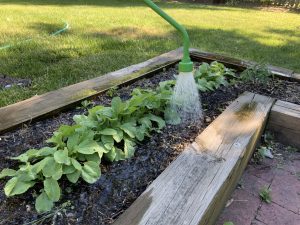
Watering the Garden Just Right
Although recent rains have relieved some gardeners from their watering chores, the respite is sure to be temporary. Seasonal thunderstorms may deluge some gardens with water while other areas, even those close by, may stay fairly dry. Most garden plants will need 1-1.5 inches of water per week to maintain healthy leaves, flowers and fruit. When Mother Nature does not provide enough, it’s up to the gardener to supply the rest. Not too little, not […]
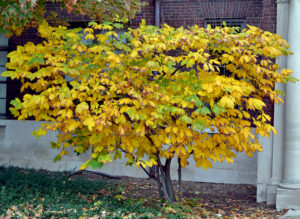
Native Shrubs For Fall Color
If you’re looking to add native shrubs to your home landscape, fall is an excellent time to look for those with good fall color. While many factors affect the display of fall color, there are a number of native shrub species that perform reliably in our area. Here’s a short list to consider, including their mature height as well as flowers and fall color. Most […]
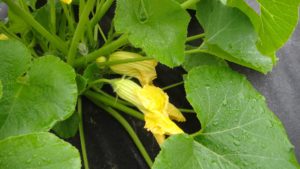
Squash blossoms drop, and sometimes that’s normal
A common complaint among vegetable gardeners is that their squash plants have a lot of flowers, but many of them just fall off without producing any fruit. This same observation can be made of cucumbers, melons, pumpkins and gourds, all of which are collectively known as “vine” crops to home gardeners. These plants are all members of the Cucurbitaceae family and are also commonly referred to as “cucurbits.” All of these vine crops produce separate […]
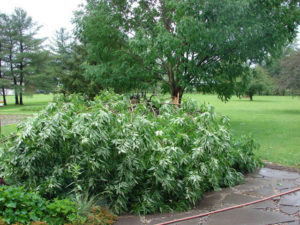
When lightning strikes, is the tree out?
When lightning strikes a tree, it will most certainly leave a calling card, but it can be difficult to predict whether that injury is strike one, two or three. There are many variables to consider, including the species, moisture content, relative health of the tree at the time of the strike, and the intensity of the strike. Lightning can strike just about anything tall, but trees do seem to be a frequent target. And the […]

Oedema Is a Corky Quirk
Plants that experience extremes in soil moisture may develop spots on their leaves, called “oedema” (also spelled “edema”). The spots may first appear as a blister or raised spot, particularly on the undersides of leaves, but may occur on the top side as well as on the stems. Eventually, the blister develops a rust-colored, cork-like scab. Oedema is most commonly seen in the greenhouse on ivy-leaf geraniums but also on pansies, jade, and other thick-leaved […]

Perennials for Shady Gardens
Plants differ in their adaptability to different growing conditions. Sunshine is one of the most significant factors. We often think of light as being either sunny or shady, but, in fact, there are many “shades” of light in between. Your garden may experience light shade, such as that filtered through an overhanging tree; dense shade, such as that found in woodlands; or intermittent shade from an object, such as a building that blocks the sun […]
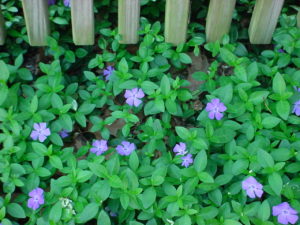
Use Caution With Spreading Plants
People often select plants first for their beauty and second for their functionality in the garden. Frequently, we don’t know or don’t consider a plant’s behavior when we’re selecting them. Almost by definition, a species that is an effective ground cover will have a spreading habit. But does that make the species aggressive or invasive? There can be much confusion about the meaning of the terms aggressive and invasive. Some plants, given their optimal habitat, […]

Dividing iris
Whether you’re looking to expand your planting of iris or just need to rejuvenate an older planting, late summer through early fall is a good time to lift and divide iris. Dividing every three to five years will help rejuvenate the planting, and encourage more blossoms for the subsequent years. Most iris plants spread by means of underground stems called rhizomes. Rhizomes become too crowded over time, resulting in reduced flowering. By lifting and dividing […]